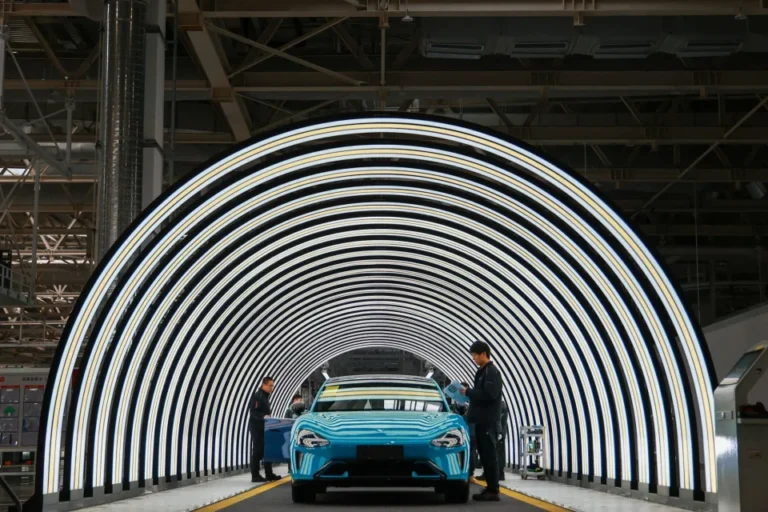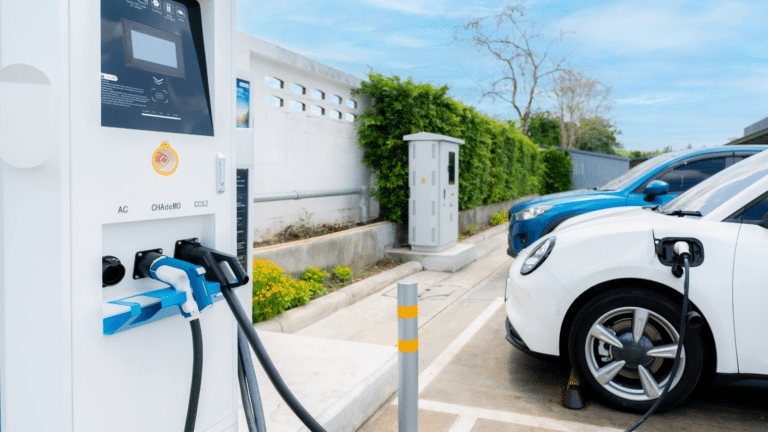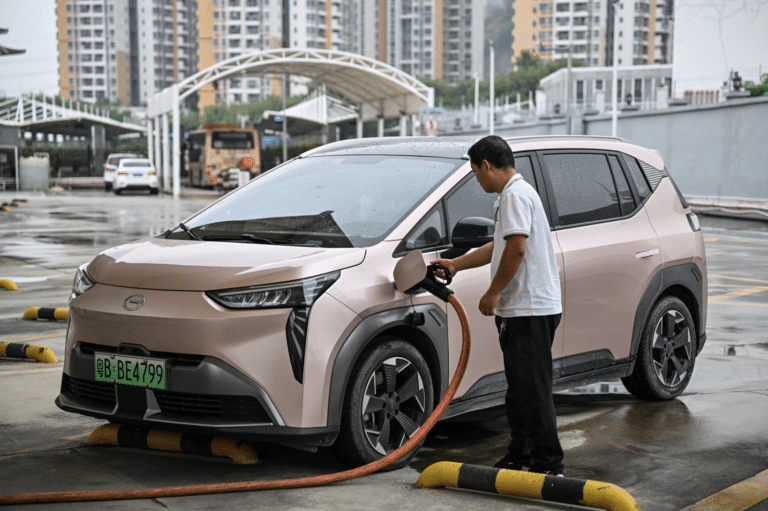Pentagon’s Critical Mineral Stockpiling Plan Points To Shortage Expectations
Defense Logistics Agency is buying critical minerals to secure supply chains from China's control. Stockpiling efforts are ramping up.
Current Access Level “I” – ID Only: CUID holders, alumni, and approved guests only
Summaries by , , • February 25, 2020
This roundtable report reflects the authors’ understanding of key points made in the course of the discussion. It does not necessarily represent the views of the Center on Global Energy Policy. The summary may be subject to further revision.
Contributions to SIPA for the benefit of CGEP are general use gifts, which gives the Center discretion in how it allocates these funds. More information is available on our Partners page. Rare cases of sponsored projects are clearly indicated.
On September 17, 2019, Columbia University’s Center on Global Energy Policy (CGEP) hosted a workshop on the electrification of New York City’s bus fleet. The workshop followed up on a May 2019 report by graduate students at Columbia University’s School of International and Public Affairs (SIPA), which offers a number of observations and recommendations to assist the Metropolitan Transit Authority (MTA) with meeting its goal of fully electrifying New York City’s municipal bus fleet by 2040. The report was distributed to all participants ahead of the workshop.
A diverse group of stakeholders participated in the workshop, including representatives from MTA, New York State government, New York City government, electric utilities, private businesses, labor advocates and environmental organizations.
This report summarizes the main points discussed in the workshop, which was conducted under Chatham House Rule. Remarks are presented on a nonattribution basis unless participants requested attribution.
The MTA is the largest public transit authority in the United States, with a fleet exceeding 5,700 buses. As of January 2019, about half of the MTA’s fleet was diesel fueled. (The remainder was diesel hybrid and natural gas.) Most of the buses ordered during the MTA’s 2010–2014 and 2015–2019 capital programs are diesel buses.[1]
In early 2018, the MTA initiated an electric bus pilot to test operational performance and gather data to support the agency’s long-term goal of transitioning to a zero-emissions fleet by 2040.[2] Under the current pilot, the MTA is operating five Proterra E2 Catalyst models and five New Flyer XE40 Xcelsior models for a trial period of three years. The MTA’s capital budget plan for 2020–2024—released in September 2019—calls for a $1.1 billion investment in electric buses. The MTA estimates that this allocation would allow it to purchase 500 electric buses over the next five years. The capital budget plan states that all vehicle purchases after the year 2029 will be electric.
While the MTA is the primary institutional decision maker for electric bus adoption in New York City, a number of other stakeholders also have important roles to play in meeting the MTA’s 2040 goal. These include New York State government, New York City government, electric utilities, private businesses, labor unions and advocacy organizations (figure 1). Communication, coordination and planning across stakeholder groups will be critical to ensuring a smooth and thoughtful fleet transition.

As the MTA prepares to transition to an all-electric bus fleet, New York City government may be able to support the transition through a series of carrot-and-stick actions. New York City has committed to aggressive reductions in greenhouse gas (GHG) emissions across the entire city. To reach these targets, transportation-related emissions must decrease 70 percent by 2050. Buses will play a key role in reaching these targets, as approximately 11.5 percent of trips taken in New York are by bus.
Additionally, buses are one of the city’s most significant contributors to PM2.5 emissions, creating environmental justice (EJ) concerns that electrification can address. Buses primarily serve neighborhoods with less access to the city’s subway network, which are largely low-income communities. These environmental justice communities are hit hard by PM2.5 pollution, with 1.75 times the PM2.5 concentration of the rest of the city and nine times the hospitalization rate due to respiratory health issues. Furthermore, 75 percent of bus depots are located in EJ communities, and bus users tend to be lower-income individuals who are disproportionately impacted by pollution in the city.
Several participants emphasized the importance of ensuring that MTA considers environmental justice and the needs of disadvantaged communities in implementing its electric bus plans. These participants noted that no formal public comment process for electric bus planning exists today and agreed that the magnitude of the transformation warrants the proactive inclusion of public input. Several opportunities for public comment were identified, including
Vehicle manufacturers in particular were concerned about the precariousness of federal emissions regulations in the current political environment. Federal emissions regulations have historically driven technology advancement and emissions reductions in a certain and predictable manner. City and state government officials agreed that without strong guidance under the current federal administration, cities and states will struggle to ensure air quality attainment and GHG reductions without additional policies.
Additional emissions regulations and policies were discussed—including congestion pricing, low emissions zones and technology bans—to achieve the intended emissions targets. While congestion pricing is a good start, many stakeholders in attendance believe it will face many challenges and is not enough to impact EV adoption. Low emission zones (LEZ) have proved to be an effective policy in other global cities, such as London. In the US it is thought that a LEZ would be subject to federal preemption and therefore disallowed. However, no city or state has attempted to implement a LEZ, and thus it has yet to be tested legally.
Many participants expressed interest in the use of micromobility technologies, including shared scooters and dockless e-bikes as a complement to electric buses. While micromobility is a very different mode of transportation than buses, it was clear from discussion among participants that many similarities exist in the operational challenges between both electric buses and electric micromobility options. These include the use of streets and sidewalks, charging operations, safety and the integration into door-to-door route planning.
Closely tied to emissions policies are a variety of pricing policies, financing tools and incentives that could drive electric bus adoption, drive down emissions and generate revenues for reinvestment in electric buses. Robert Gurman of Proenergy Consulting and an advisor to the New York Green Bank emphasized the need to look at the cost of electric buses from a total cost of ownership (TCO) standpoint in order to demonstrate the positive economics of electric buses. In other words, the higher up-front cost of an electric bus is offset by operational, maintenance and fuel savings over the life of the vehicle. In designing new policies and incentives, a TCO approach should be incorporated into the analytical process.
Other stakeholders pointed out that any cost-benefit analysis of electric buses should also take into consideration the level of direct and indirect subsidies that currently go toward personal vehicles that should shift toward zero-emission public transit. For example, existing free parking spaces across the city are essentially subsidies for cars rather than street space that could be converted into dedicated bus lanes.
Some government representatives offered pricing-policy ideas, including the creation of a cap and invest–style market to put a price on the carbon emissions generated from vehicles, thus further decreasing the relative cost of electric buses. New York State is participating with a coalition of northeastern states to create such a market, known as the Transportation Climate Initiative (TCI). Outstanding questions in the development of the TCI include deciding the point at which market allowances will be made, the willingness of all states to reinvest in electric buses, and other complementary policies to the cap-and-invest market. Other existing funds available for electric bus conversion includes the Volkswagen Settlement Fund.
The MTA is currently operating 10 electric buses as part of a three-year leasing pilot program to build an internal knowledge base on electric bus technology and gather operational data for scale-up and implementation. This pilot is critical to understanding the real-world performance of electric buses in New York City and informing policy and operational decisions along the path to 100 percent electric buses by 2040.
MTA currently operates five Proterra E2 Catalyst bus models equipped with 440 kWh batteries, which serve the B32 and B39 routes, as well as five New Flyer XE40 Xcelsior models equipped with 150 kWh batteries, which serve the M42 and M50 routes. Proterra buses charge primarily through 50 kW depot chargers at the Grand Avenue Depot, where it takes approximately six to eight hours for a full charge. The buses also charge at a 500kW fast-charging station at the Williamsburg Bridge Plaza, which serves as a range extender and provides increased route flexibility. The New Flyer buses are supported by two on-route fast chargers (300 kW) located on the east and west side of Manhattan at East 41st Street and at Pier 83, Circle Line on West 43rd Street, respectively. In addition, there are two 50kW depot chargers at the Michael J. Quill Bus Depot, which can fully charge the New Flyer equipment in two to three hours.
MTA and the participating manufacturers were able to share detailed learnings from the pilot during the stakeholder workshop, offering new information to many participants at the workshop. Those learnings are summarized in the special section in the following pages.
Stakeholders were interested in learning from the bus manufacturers in attendance about the current state of electric bus and battery technology. One manufacturer said that because heating of the bus interior uses nearly three times as much energy as propulsion, the battery range is still a challenge. In addition, the capacity of lithium-ion batteries declines as batteries age. At the end of life, the battery capacity is approximately 80 percent of the beginning of life capacity. This means that the battery capacity must be accounted for when planning the mileage and routes that buses are expected to serve.
Further discussion ensued about how to scale up the implementation of new electric buses across existing bus depots. MTA plans to spread any new purchases of electric buses across routes and depots in the city. This approach will allow MTA to test the suitability of buses on different routes and reduce the impact of a new rollout on any one bus depot. Because depot operators are not yet fully comfortable with electric buses, spreading the new buses across many depots in smaller volumes will allow multiple facilities to share the risk and diffuse the knowledge required for electric bus implementation. Furthermore, to transform a single bus depot all at once, that depot would likely need to close, raising logistical challenges with respect to maintaining service.
MTA’s electric bus pilot has helped both the MTA and electric bus manufacturers gather important experience and data on operational issues to be addressed in scaling up New York City’s electric bus fleet. Observations to date include the following:
The installation of chargers for electric buses creates additional load that utilities are required to serve, which in many cases will require upgrading distribution lines to depots where chargers are located as well as other infrastructure investment. The cost for equipment on site must be paid by the end-use customer. Con Edison’s costs for additional capacity required for a new charger are approximately $1,000 per kilowatt. (Con Edison has been approved by New York’s Public Service Commission to use $35 million to prepare areas within its service territory for EV charging; however, these funds must be used for publicly available chargers. Chargers solely available to MTA buses are not eligible.) MTA will incur significant up-front costs for the addition of the bus chargers at its depots.
Some participants saw an opportunity to use a public-private partnership (PPP) to jointly finance the street furniture required to enclose electrical equipment on sidewalks for on-route charging. The benefit of this approach would be to derisk the investment for both charging equipment manufacturers and MTA. Additionally, standard terms for charging infrastructure could be created to expedite any build-out of new charging on public or private property. This is an approach that the natural gas supplier industry has taken in order to streamline the process for commercial gas stations to quickly install and operate natural gas fueling. Standard terms have yet to be created for heavy-duty charging, and participants expressed interest in pursuing this collaboratively.
Some workshop participants said that utilities are reluctant to support technology-specific rates but have still begun the work to implement some exceptions. Con Edison has introduced a rate where publicly available DC fast chargers—the infrastructure that qualifies for make-ready funding—receive a 39 percent discount on demand charges. This rate is intended to last for the next seven years. Reducing the demand charge is intended to promote the utilization of the chargers, through which demand charges would become a smaller component of the overall bill. The lower utilization rates many chargers currently have should be mitigated by these discounts, and utilization rates should increase as EV penetration increases. This rate is part of a suite of policies and programs that Con Edison is experimenting with, including the ongoing testing of vehicle-to-grid (V2G) programs with the White Plains School District’s buses.
Discussion of other policies to support bus electrification included the possibility of utility ownership of the bus batteries. At the end of the useful life of the buses, the utility would then be able to use the batteries for load management and grid assets. This would increase the value proposition of bus electrification, as strategically placed batteries may reduce additional infrastructure investment needs.
Other ideas included the use of regenerative braking and power storage from subway operations to charge electric buses at bus stops that operate in parallel with the subway. Doing so appears to be feasible based on recent studies but has not been seriously considered for implementation to this point. Stakeholders expressed interest in continuing this research through a technology evaluation to connect surface and subsurface power systems between MTA subways and buses.
Trade-offs exist between rapid or more measured infrastructure development to support electrification. To revolutionize the grid, comprehensive study and planning is required. This is an integral part of the regulatory compact that Con Edison operates, where a key criterion of success is the provision of low-cost service. While more rapid installation would be possible with indiscriminate building of grid infrastructure, the costs of doing so would become part of the rate base. In trying to avoid creating stranded assets, utilities have strong resistance to rapid installation. Other participants—including Kristin Barbato, CEO and founder of Build Edison—emphasized that grid investment cannot wait. She said that while the utilities are slowed down due to regulatory approval and procurement processes, changes must be made to accelerate the process, and that will require intense coordination and cooperation between all stakeholders.
Workshop participants indicated that the learnings from iteration will be key to complete electrification without affecting bus service. Some also emphasized that there are significant up-front costs involved in upgrading the electricity grid to prepare for electrification and to install the prerequisite charging equipment. These costs will need to be socialized and will likely require industry partnerships.
Given the early stage of electric vehicle infrastructure implementation, workshop participants supported the idea of creating a formal working group, open to all relevant stakeholders, tasked with the development of a comprehensive plan that supports bus electrification. The working group would be responsible for developing a master strategy for widespread fleet electrification, examining topics and engaging experts on details such as

[1]. New York. Metropolitan Transit Authority. Capital Program Oversight Committee Meeting. 2019. http://web.mta.info/mta/news/books/pdf/190122_1400_CPOC.pdf.
[2]. New York. Metropolitan Transportation Agency. Bus Plan. Metropolitan Transportation Authority, 2018. http://web.mta.info/nyct/service/bus_plan/bus_plan.pdf.
This report was written by Andrew Catania, Lauren Kastner and Michael Woods, master’s candidates at SIPA. Their yearlong research efforts and recommendations for the electrification of New York City’s bus system is captured in the EVery City report, which served as the basis for the September 17, 2019, stakeholder workshop.
The authors thank Professor David Sandalow, Inaugural Fellow at CGEP and Co-Director of the Energy and Environment Concentration at SIPA, for serving as a research advisor, editor and mentor throughout the team’s research. The authors thank Kristin Barbato for serving as a faculty advisor, Eugene Tseng for helping draft the EVery City report, Caitlin Norfleet for coordinating planning for the workshop, Elora Ditton for supporting the team throughout the project, and Jie Deng, Yichu Lu, Leo Luo and Corissa Steiner for taking notes during workshop sessions.
This work was made possible by support from the Center on Global Energy Policy. More information is available at https://energypolicy.columbia.edu/about/partners.

Electric vehicle (EV) batteries are a major source of critical mineral (CM) demand.

The Biden Administration's new foreign entity of concern rule on critical minerals excludes Chinese sources, posing challenges for the U.S. energy transition.

Full report
Summaries by , , • February 25, 2020